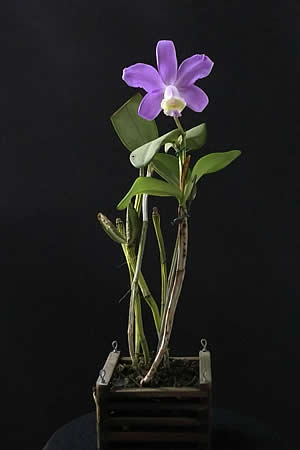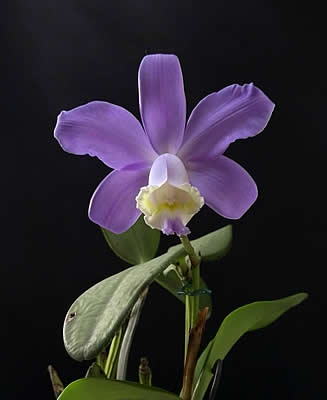The Loddiges’ Cattleya (Cattleya loddigesii) is a natural, sympodial, and epiphytic orchid found along the banks of watercourses in semi-open, clear, and humid forests at altitudes ranging from 400 to 1,200 meters (approximately 1,312 to 3,937 feet) in the states of Paraná, São Paulo, Minas Gerais, Rio de Janeiro, and Espírito Santo in Brazil, as well as in Argentina and Paraguay. It can be confused with the Cattleya harrisoniana, but it differs from it by having a rounded frontal lobe of the lip and its flowers emerging from a dry spathe, while those of the Cattleya harrisoniana emerge from a green spathe. It belongs to the group of bifoliate Cattleyas. It blooms in autumn and winter, producing floral stems with up to 7 flowers, each measuring 3.15 to 3.94 inches (approximately 8 to 10 cm) in diameter, and they are fragrant. The flowers last for about 15 days.

The genus name is in honor of Lord William Cattley (1788-1835), an English engineer and horticulturist, a pioneer in the cultivation of exotic orchids in Europe and the patron of botanist John Lindley, who, with his assistance, discovered the first Cattleya in 1818. It was in one of his greenhouses that a Cattleya labiata Lindl., type variety (originating from northeastern Brazil), first flowered on that continent. The species name is in honor of the English botanist of German origin, Joachim Conrad Loddiges (1738 – 1826). The Cattleya loddigesii has a natural hybrid with the Cattleya walkeriana, which is the Cattleya x dolosa (dolosa in Latin means deceitful, misleading, due to the confusion it can cause in its identification with its parent plants).
This Cattleya species thrives under temperatures ranging from 41 to 95°F (5 to 35°C) throughout the year, withstanding up to 104°F (40°C). It prefers 50 to 60% shading (40,000 to 28,000 lux), relative humidity of 60% or higher, and good ventilation. The substrate for its cultivation can be made of slabs, bark, pieces of branches, or tree trunks. It can also be grown in plastic pots or wooden boxes, using a substrate consisting of equal parts of charcoal, crushed stone, and pine bark.
As it has pseudobulbs in the form of “canes,” it tends to have difficulty retaining water and nutrients, requiring special care in watering. When cultivated on trees, pieces of bark, slabs, or trunks, it should be watered daily. In pots, you should avoid letting the substrate become completely dry while also preventing it from getting waterlogged. Water the Loddiges’ Cattleya generously during the growth period (spring and summer), but reduce watering during the autumn and winter, as that’s when floral stems begin to appear, and excess water can lead to bud loss. One suggested fertilization method is foliar application weekly with a solution of 2g (1 teaspoon) of soluble NPK fertilizer Peter’s 20-20-20 diluted in one liter of water. For the substrate, you can use organic fertilization with AOSP or similar organic fertilizers once a month, sprinkling a teaspoon over the substrate.
The cultivation information presented here should be used as a guideline and should be adapted to your environmental conditions. Factors such as the climate in your region, where you grow your plants, the time you have available for care, the type of substrate, and many other factors should also be considered. Only then decide on the cultivation methods that best suit you and your plants.

